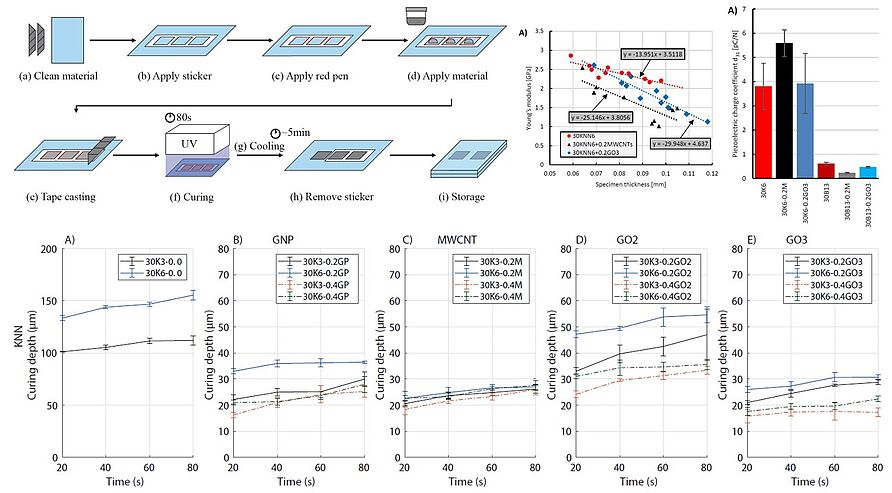Lead-free piezoelectric materials are essential for our healthy future but offer lower performance than lead-based materials. Different material combinations are explored to improve the performance of lead-free materials. By filling the UV light curable photopolymer resin with 30 vol.% lead-free piezoelectric ceramics and with up to 0.4 wt.% conductive nanofillers, thin and flexible piezoelectric 0-0-3 composites are formed. Two particle sizes of Potassium Sodium Niobate (KNN) and Barium Titanate (BTO) ceramics were used with four conductive nanofillers: Graphene Nanoplatelets (GNPs), Multi-Walled Carbon Nanotubes (MWCNTs), and two types of Graphene Oxide (GO). Resulting high viscosity suspensions are tape-cast in a mold as thin layers and subsequently exposing them to UV light, piezoelectric composite sensors are formed in 80 s. Even low nanofiller concentrations increase relative permittivities, however, they strongly reduce curing depth and increase undesirable dielectric losses. Non-homogeneous dispersion of nanofillers is observed. In total, 36 different compositions were mixed and characterized. Only six selected material compositions were investigated further by measuring mechanical, dielectric, and piezoelectric properties. Results show KNN composite performance as piezoelectric sensors is almost six times higher than BTO composite performance.
R. Mitkus, L. Piechowiak, M. Sinapius
Characterization of UV Light Curable Piezoelectric 0-0-3 Composites Filled with Lead-Free Ceramics and Conductive Nanoparticles
Journal of Composite Science 2023, 7(2), 89 [Link]

